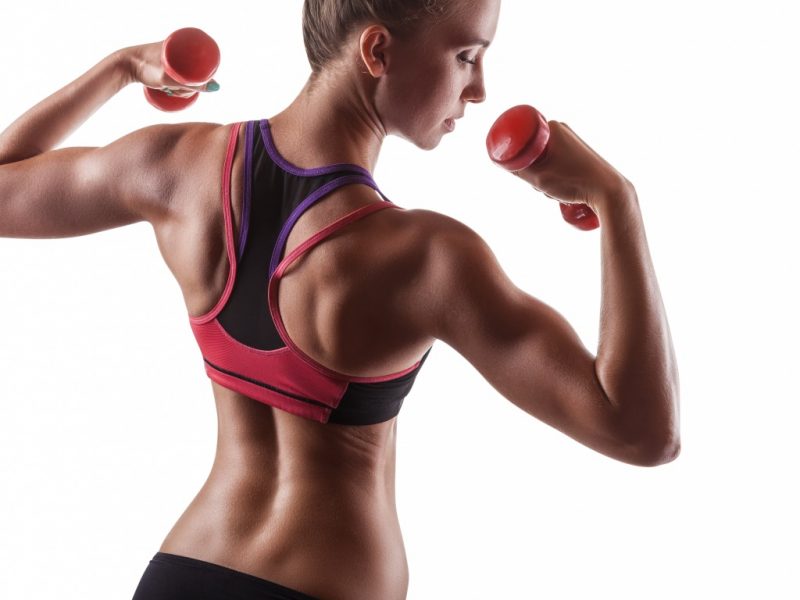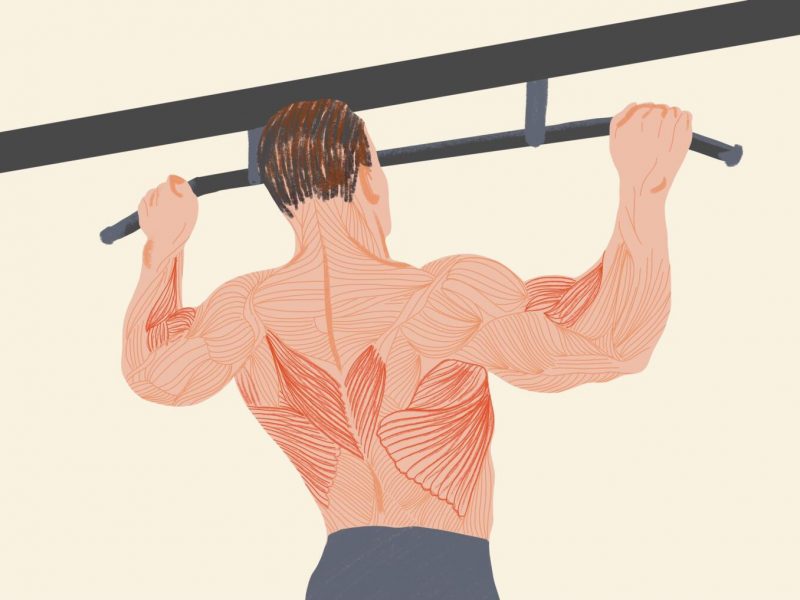The BMI is still used for the seemingly objective assessment of the constitution. Doctors in particular still often rely on this simple formula. The BMI is also included in the evaluation of many standardized fitness and health tests (e.g. for health insurance companies).
But can a healthy, fit and attractive body be assessed with an objective formula like the BMI? Are there any other simple indicators that you can use to tell something about your shape?
Who decides what weight you should be? Who determines how the distribution of muscles, fat, water, bones and organs should be? Is it even possible that there is a basic formula that simply “calculates” all people and says whether we are a good weight or not?
That’s what I’ll deal with in this article.
What is the BMI and what does it say?
The Body Mass Index, or BMI for short, was developed in 1832 and is still used as a standard measure for assessing every person. It is a simple formula, with the result of which every person can be quickly assessed on his body condition. To do this, the body weight is simply set in relation to the body size (kg / m²). A first statement about a person’s body condition can only be made with a tape measure and a scale.
The following BMI classification according to the WHO (as of 2008) is used for this:
| BMI | Meaning |
| strong Underweight | |
| 16.00 – 16.99 | Moderately underweight |
| 17.00 – 18 , 49 | slightly underweight |
| 18.50 – 24.99 | normal weight |
| 25.00 – 29.99 | Pre-obesity |
| 30.00 – 34.99 | Obesity grade I |
| 35.00 – 39.99 | Obesity grade II |
Based on this simple table, it is very easy to determine whether your body is “okay”. It tells you whether you should lose weight or gain weight. There are also gradations according to age and gender. However, these differ marginally and do not change my opinion on the BMI.
Why you should never use the BMI as the sole assessment criterion:
I am 1.80 m tall and currently weigh about 92 kg. The formula gives the result 28.40. That means that I am already clearly in the pre-obese area. That in turn means I am on the verge of obesity and desperately need to lose weight. In fact, I have a little more muscle mass than the average person and with a body fat percentage of currently around 14 to 15%, I am at a healthy level.
Even when I ran my best time at the last Ulm Marathon , for which I really lost a lot and had a single-digit body fat percentage, I was still above normal weight. By the way, during this time I had a pronounced six-pack. 😉
You can see that the formula alone says nothing about a person. For untrained people, the BMI may be a suitable first indicator, but you always have to look at the person individually. In addition, nobody shouldn’t do sports. Today everyone can start small, start exercising and also build muscle mass .
The BMI is completely unsuitable as a self-assessment indicator. Don’t let that unsettle you.
So if the BMI is not suitable for a meaningful assessment, what else is there?
Waist-to-Height Ratio
Another calculation method for the simple assessment of a good and healthy body is the waist-to-height ratio (WHtR for short). It describes the relationship between waist size and height. In contrast to the BMI, this is intended to provide a better statement about the distribution of body fat.
The value is calculated by dividing the waist circumference by the body size.
| Age | WHtR standard range |
| 0.5 | |
| 40 – 50 | 0.5 – 0.6 |
| > 50 | 0.6 |
Here a sporty person receives a significantly better rating, even if he is a little heavier.
Waist-to-Hip Ratio
Another popular formula is the waist-to-hip ratio (WHR for short). It is calculated from the waist circumference divided by the hip circumference. The areas are distinguished by gender. The German Sports Medical Association has defined the following assessment areas:
| WHR women | WHR men | Interpretation |
| Normal weight | ||
| 0.8-0.84 | 0.9-0.99 | Overweight |
| > 0.84 | > 0.99 | Obesity |
BMI, WHtR or WHR – which formula is the best?
Now we have looked at the most common formulas for a quick assessment of the figure and physical constitution. Which of these formulas should you use as a guide? None of them in my opinion.
In combination, BMI, WHtR and WHR have a greater informative value with regard to the health relevance of overweight, in contrast to the individual results. However, if you want to assess your figure and your fitness / health status simply and objectively, they are still not optimal.
What other, objective assessment criteria are there? Two further, simple assessment criteria could be the waist circumference or the dress size.
waist circumference
A very simple method of assessment is simply measuring the waist circumference. A single measurement with the measuring tape should indicate the dangerous visceral fat (fat lying in the abdomen). Fat is not just fat , this also applies to body fat. This increases the risk of diseases such as heart attack, stroke and type 2 diabetes.
It is measured two centimeters below the navel, at the (most) thickest part of the abdomen. The following values have been established for assessing the medical risk:

| circumference women | circumference men | interpretation |
| Normal | ||
| 80 – 88 cm | 94 – 102 cm | increased risk |
| > 88 cm | > 102 cm | greatly increased risk |
| women | Men | Interpretation |
| 10-13% | 2-5% | Necessary for survival |
| 14-20% | 6-13% | Athletic |
| 21-24% | 14-17% | Fit |
| 25-31% | 18-24% | Average |
| > 32% | > 25% | Obese |
There are more detailed tables that suggest an adjustment of the ranges depending on age. However, I think this overview is easily accessible and meaningful enough to form an initial judgment.If you are in the uppermost area, you should do something not only for aesthetic reasons, but also for health reasons.Muscle massAnother important indicator for a healthy and aesthetic body is muscle mass or the percentage of muscle mass in relation to body weight. The muscles are of enormous importance for your body.
| Age | women | men |
| up to 19 years | 35 – 43% | 43 – 57% |
| 20 -49 years | 31 – 39% | 40 – 54% |
| from 50 years | 27 – 34% | 37 – 48% |
The whole thing becomes really meaningful in combination with the body fat percentage.Conclusion – what should you orient yourself towards?If you want to find out whether your weight and figure are “okay”, then you shouldn’t rely on the simple formulas and their classifications. These are primarily made to give doctors an initial indication of whether someone has potential health risks due to being overweight.



